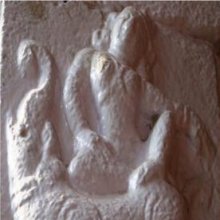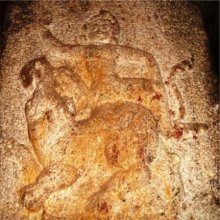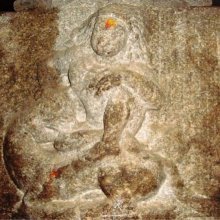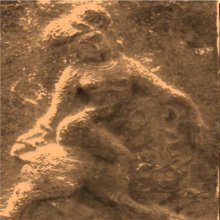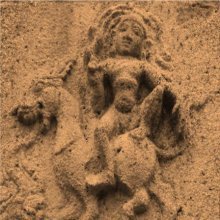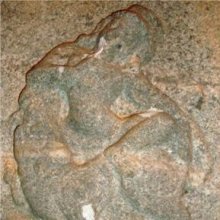Vyalinatha, Vyālinātha, Vyali-natha: 1 definition
Introduction:
Vyalinatha means something in Hinduism, Sanskrit. If you want to know the exact meaning, history, etymology or English translation of this term then check out the descriptions on this page. Add your comment or reference to a book if you want to contribute to this summary article.
Images (photo gallery)
(+3 more images available)
In Hinduism
Shilpashastra (iconography)
Source: DSpace at Pondicherry: Siddha Cult in Tamilnadu (sculpture)Vyālinātha (व्यालिनाथ) or Jalandranātha refers to the second representation of the nine navanātha reliefs in the Ulsūr Someśvara temple.—The second representation is of the Nātha on a mythical animal Vyāli having elephant trunk, and lion’s body. Vyāli is in a striding posture as its’ trunk is shown lifted upwards. His right is folded and right hand is resting on it. His left hand is resting on the left knee. He is wearing big kuṇḍalas on both the ears and cross bands on his chest. Bangle like ring is also visible on his hands. His head is slightly raised as if he is looking upwards.
In the Ulsūr Someśvara temple, on the south wall of the ardhamaṇḍapa, there found depictions of the navanāthas (eg. Vyālinātha) in a variety of poses with huge coffiures, holding attributes such as kamaṇḍala, daṇḍa (staff) and so on. From east to west the nine sculptures of the Nāthas appear in the following order: seated respectively on a Tortoise, Vyāli, Lion, Fish, Scorpion, Snake, Antelope, Boar and Tiger.

Shilpashastra (शिल्पशास्त्र, śilpaśāstra) represents the ancient Indian science (shastra) of creative arts (shilpa) such as sculpture, iconography and painting. Closely related to Vastushastra (architecture), they often share the same literature.
See also (Relevant definitions)
Partial matches: Vyali, Natha.
Full-text: Vyali, Jalandranatha.
Relevant text
No search results for Vyalinatha, Vyālinātha, Vyali-natha, Vyāli-nātha; (plurals include: Vyalinathas, Vyālināthas, nathas, nāthas) in any book or story.
